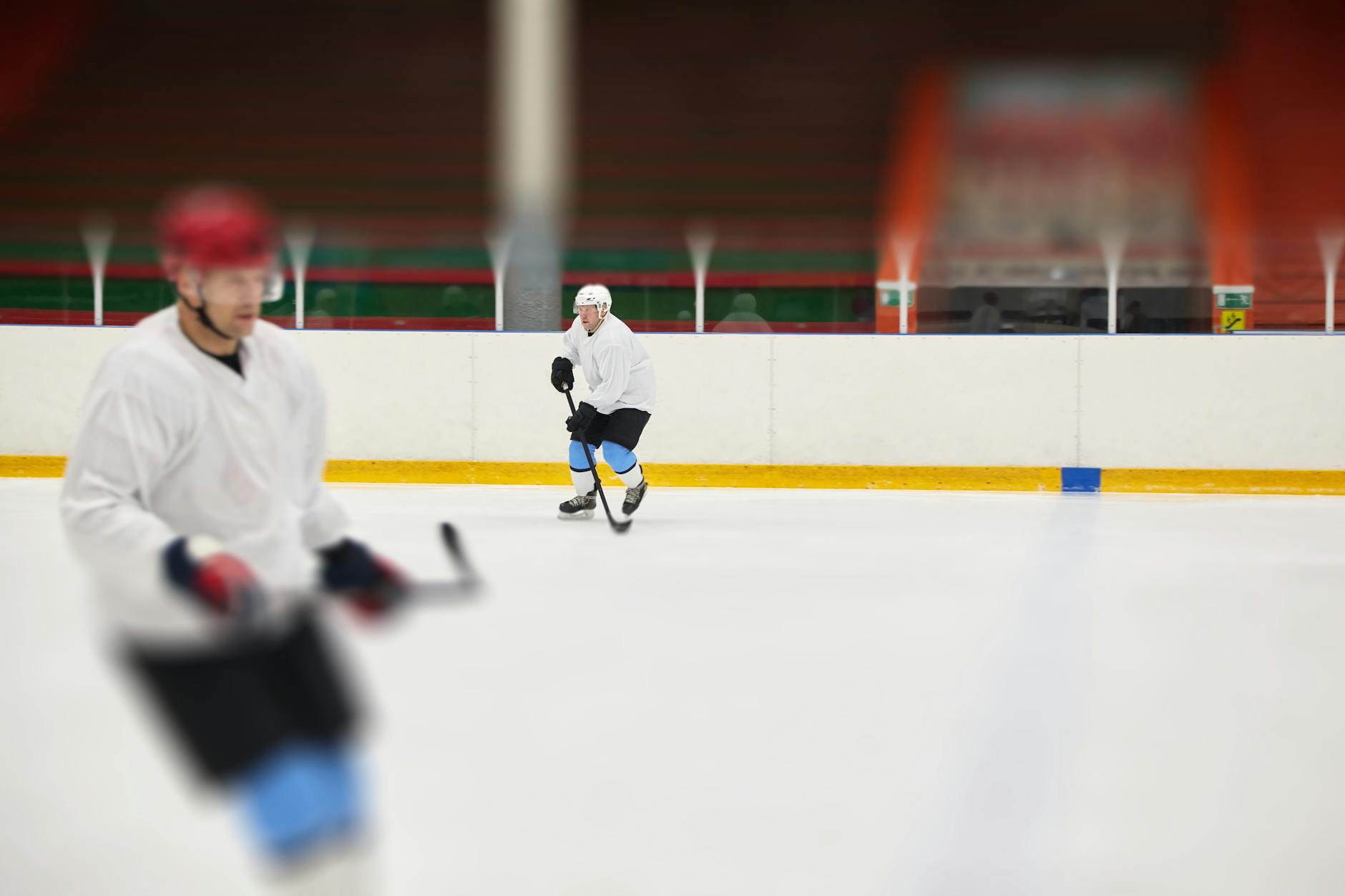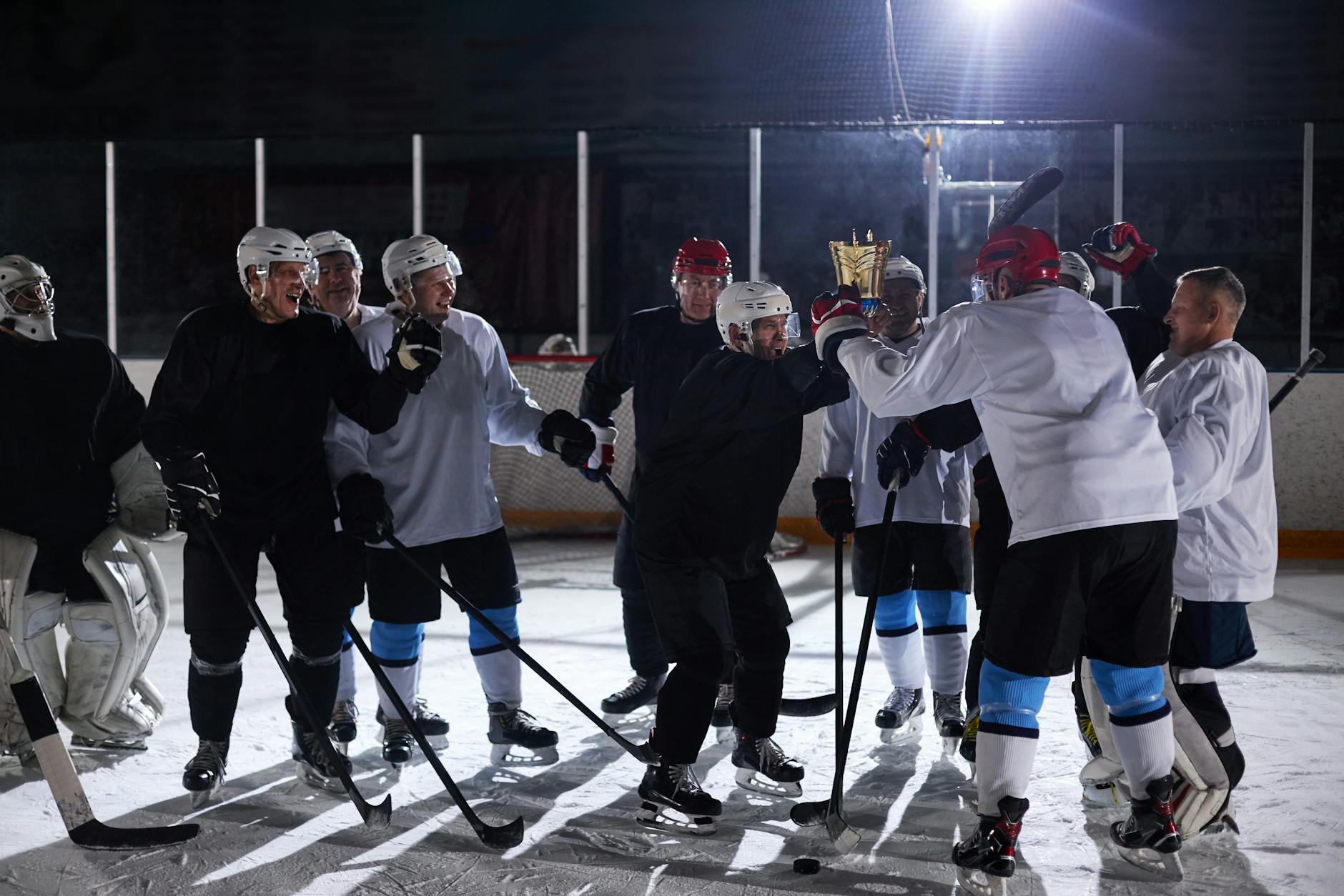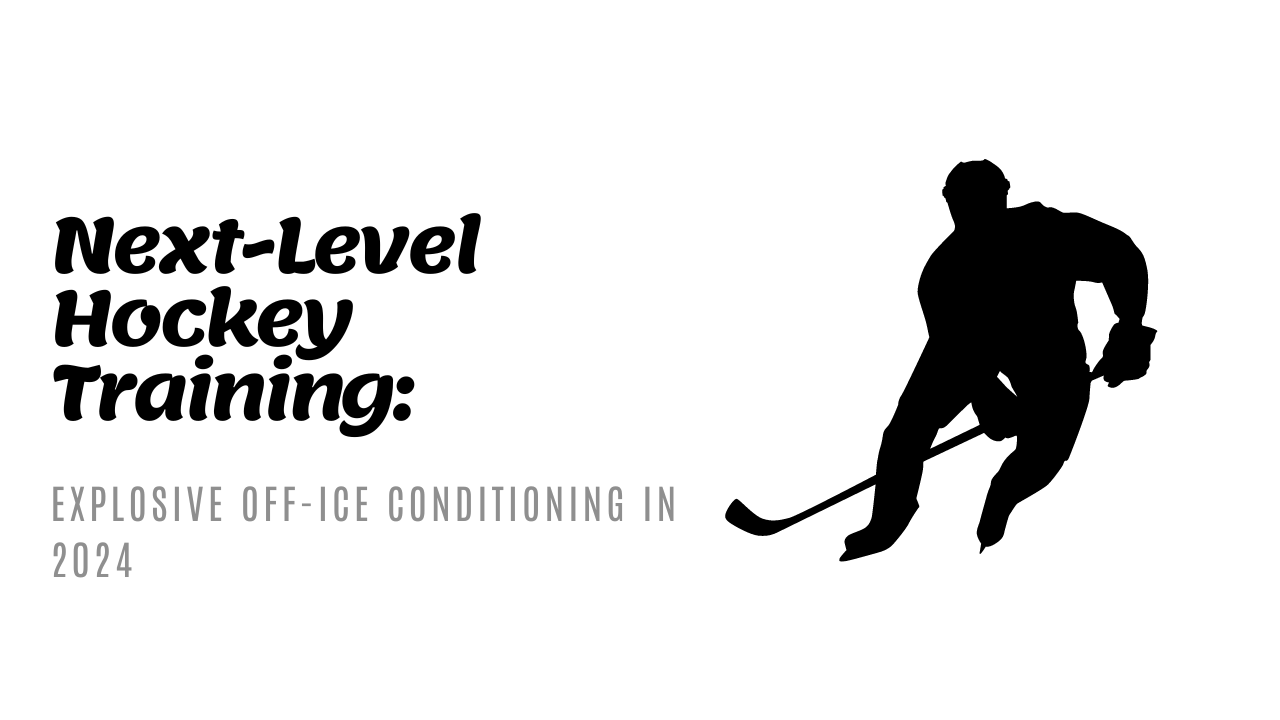Ever wonder what it takes to elevate your hockey game beyond the rink? Off-ice conditioning routines might be the game-changer you’re looking for. Whether you’re aiming for better agility, increased strength, or quicker reflexes, these exercises play a crucial role in your overall performance.
Think of off-ice conditioning as the backbone of your on-ice skills. You’ll be working on strength, balance, and endurance all critical components for becoming a top-notch player. From leg strength exercises like squats to agility drills, these routines offer a comprehensive approach to physical fitness.
Curious about what routines to adopt? You’ll discover a variety of exercises tailored for hockey players, each designed to target key muscle groups and improve your athletic capabilities. Stick with it, and you’ll notice the difference in your speed, power, and stamina on the ice. Ready to dive in and boost your performance? Let’s get started.
Benefits of Off-Ice Conditioning Routines
Engaging in off-ice conditioning routines offers a myriad of benefits for hockey players. These routines go beyond the ice, playing a critical role in enhancing your physical abilities, preventing injuries, and elevating your overall performance level on the rink.
Improved Strength and Power
Off-ice conditioning workouts are tailored to boost your strength and power, essential elements for excelling in on-ice performance. By incorporating exercises like weight training, plyometrics, and resistance training, you can enhance your muscle strength and explosiveness. This increased strength translates to more powerful shots, quicker movements, and better overall performance during games.
Enhanced Endurance and Stamina
Off-ice conditioning contributes significantly to improving your endurance and stamina levels, crucial for sustaining high performance throughout intense hockey games. These workouts focus on cardiovascular exercises, interval training, and endurance drills to build your stamina over time. By consistently engaging in off-ice conditioning, you can increase your endurance capacity, allowing you to maintain peak performance levels for longer durations on the ice.
Injury Prevention
One of the key benefits of off-ice conditioning is its role in injury prevention and maintaining your physical well-being as a hockey player. These routines help in strengthening muscles, improving flexibility, and correcting imbalances, reducing the risk of injuries during gameplay. By targeting specific muscle groups and enhancing overall body mechanics, off-ice conditioning plays a vital role in keeping you injury-free and ensuring you can continue to play at your best.
Effective Off-Ice Workouts for Hockey Players
Off-ice training plays a crucial role in enhancing a hockey player’s performance on the ice. Incorporating effective workouts can significantly improve leg strength, core stability, speed, agility, and coordination. Let’s dive into some key off-ice routines tailored for hockey players.
Leg Strength and Explosiveness
Building leg strength and explosiveness is essential for improving skating power and agility. Including exercises like squats, lunges, and box jumps in your off-ice workout regimen can help strengthen the muscles crucial for powerful strides and quick direction changes on the ice. These exercises focus on developing the quadriceps, hamstrings, and calf muscles, contributing to better performance during gameplay.
Core Stability and Balance
Enhancing core stability and balance is vital for maintaining body control and stability while maneuvering on the ice. Incorporate exercises such as planks, Russian twists, and stability ball exercises to strengthen your core muscles. A stable core not only improves your balance but also enhances your ability to generate power from your center, translating into more forceful movements during hockey plays.
Plyometric Drills for Speed
Integrating plyometric drills into your training routine can boost speed and agility essential for quick accelerations and sharp turns on the ice. Plyometric exercises like squat jumps, box drills, and lateral bounds help improve your explosive power and coordination. By engaging in these drills, you can enhance your ability to swiftly navigate through game situations, outmaneuver opponents, and seize scoring opportunities.
Stickhandling and Coordination Exercises
Improving stickhandling skills and coordination is fundamental for excelling in hockey. Practicing drills that focus on puck control, hand-eye coordination, and quick reactions can elevate your performance on the ice. Incorporate exercises like cone dribbling, reaction ball drills, and passing sequences to hone your stickhandling abilities. These drills not only enhance your dexterity but also refine your coordination with teammates during gameplay.
Through a well-rounded off-ice training regimen that targets leg strength, core stability, speed, agility, and coordination, hockey players can elevate their performance and excel in various aspects of the game. By consistently incorporating these workouts into your routine, you can enhance your physical capabilities, sharpen your skills, and gain a competitive edge on the ice.
Incorporating Off-Ice Conditioning into Your Training Routine
In the world of hockey, mastering off-ice conditioning is as crucial as on-ice skills. By integrating off-ice training into your routine, you can enhance your performance, prevent injuries, and boost overall athleticism. Let’s delve into key aspects to effectively incorporate off-ice conditioning into your training regimen.
Creating a Structured Off-Ice Workout Plan
To kick off your off-ice training journey, start by crafting a structured workout plan tailored to your on-ice goals and schedule. Begin with a warm-up consisting of dynamic stretches and light cardio to prepare your body for the session ahead. Incorporate exercises that target crucial areas such as leg strength, core stability, and cardiovascular endurance. Utilize resources like USA Hockey’s dryland training to access age-appropriate exercises that align with your hockey aspirations.
Consistency and Progression
Consistency is the linchpin of off-ice training success. Regularly engaging in workouts and gradually increasing the intensity is key to unlocking long-term improvements. Embrace the concept of progressive overload by challenging your body with incremental increases in weight, repetitions, or duration. By maintaining consistency and following a progressive training plan, you pave the way for noticeable enhancements in your on-ice performance.
Rest and Recovery
Amidst the dedication to training, don’t overlook the significance of rest and recovery in your off-ice regimen. Adequate rest periods allow your muscles to repair and grow stronger, essential for performance gains. Integrate rest days into your schedule to prevent burnout and minimize the risk of overuse injuries. Remember, recovery is just as vital as the workout itself. Embrace relaxation techniques, proper nutrition, and quality sleep to ensure your body recuperates effectively.
 Photo by Tony Schnagl
Photo by Tony Schnagl
Incorporating off-ice conditioning smartly can elevate your game on the ice. By structuring your workouts, staying consistent, and prioritizing recovery, you lay a solid foundation for athletic growth and peak performance in the world of hockey. So lace up your training shoes, embrace the grind, and watch as your off-ice efforts translate into on-ice success.
Recommended Resources for Off-Ice Conditioning
When it comes to enhancing your off-ice conditioning as a hockey player, utilizing various resources can significantly benefit your training routine. Here are some valuable recommendations to elevate your off-ice workouts:
Online Platforms and Videos
Exploring online platforms and videos that showcase effective off-ice workouts and drills tailored for hockey players can be a game-changer in your training regimen. Websites like HockeyTraining.com offer a plethora of resources, including detailed workout plans, demonstration videos, and expert tips to improve your strength, endurance, and agility off the ice.
Watching instructional videos on platforms like YouTube can also provide valuable insights into specific exercises and techniques aimed at enhancing your hockey performance. Channels like How To Hockey offer a wide range of tutorials on off-ice conditioning drills, ensuring you stay engaged and motivated throughout your training sessions.
 Photo by Tony Schnagl
Photo by Tony Schnagl
Professional Guidance and Training Programs
Seeking professional guidance from experienced trainers or coaches is pivotal in developing personalized off-ice conditioning programs that cater to your specific needs and goals as a hockey player. Working closely with a knowledgeable coach can help you identify areas for improvement, create a tailored training schedule, and receive valuable feedback to enhance your overall performance.
Enrolling in training programs designed by fitness experts with a focus on hockey-specific conditioning can provide you with structured workouts, progressive training plans, and expert supervision to maximize your off-ice training results. Platforms like TrainHeroic offer access to professional training programs crafted by elite coaches, ensuring you receive top-tier guidance to elevate your off-ice conditioning game.
By leveraging the wealth of resources available online and seeking guidance from professionals, you can take your off-ice conditioning to new heights and excel on the ice with enhanced strength, speed, and endurance.
Conclusion
Off-ice conditioning routines are essential for any hockey player who wants to improve performance and longevity in the sport. By focusing on strength, agility, balance, and endurance, you not only enhance your on-ice skills but also reduce the risk of injury.
Consistency is key. Make these routines part of your regular training. Use them to complement your on-ice practice for maximum impact.
Remember, the best hockey players train hard off the ice to dominate on it. Stay committed, stay strong, and you’ll see the results in your game.

